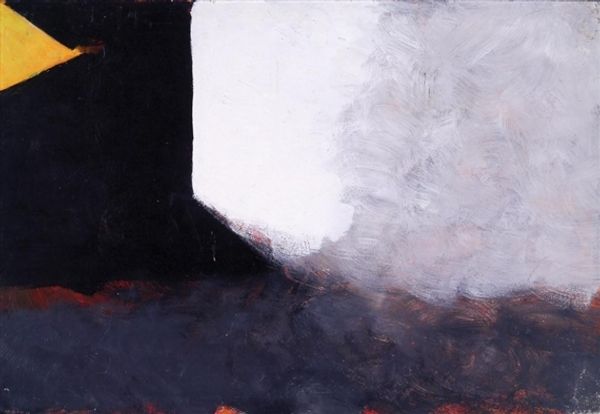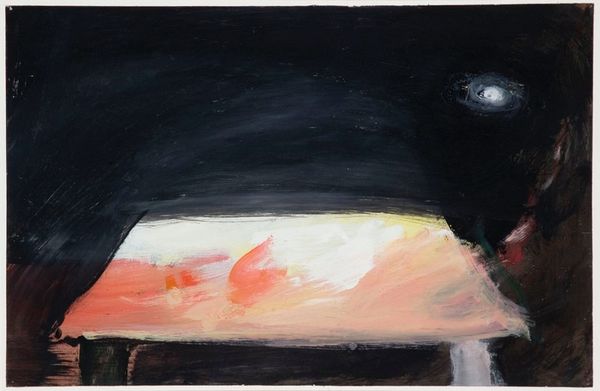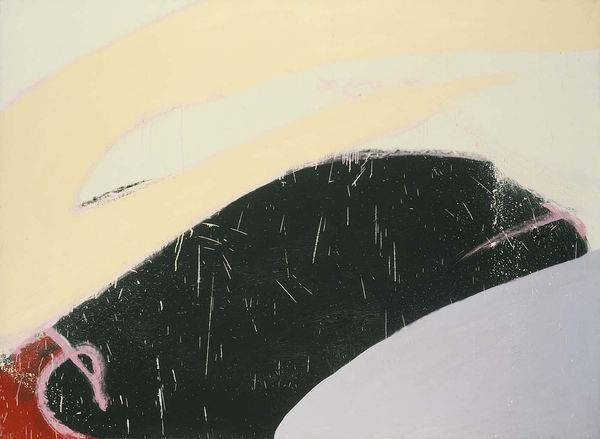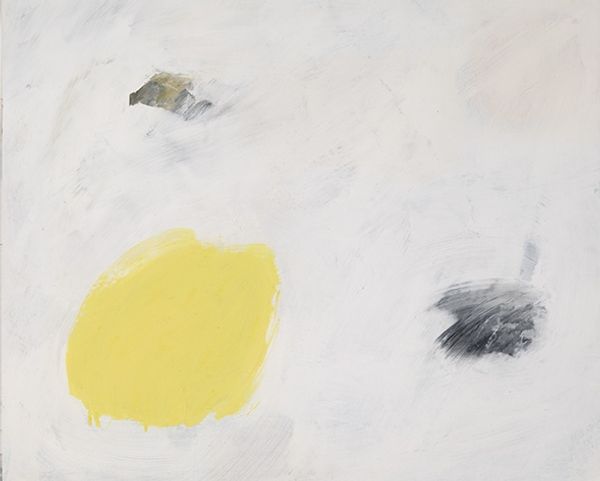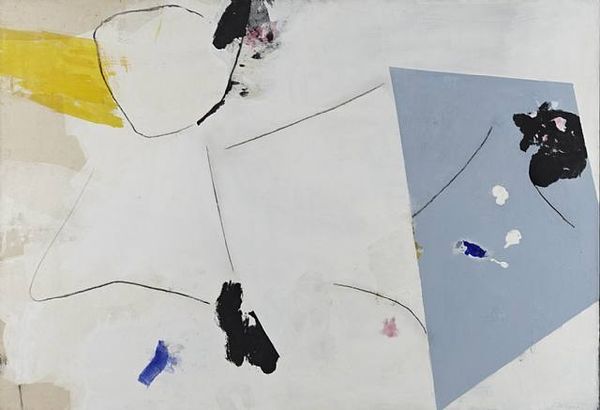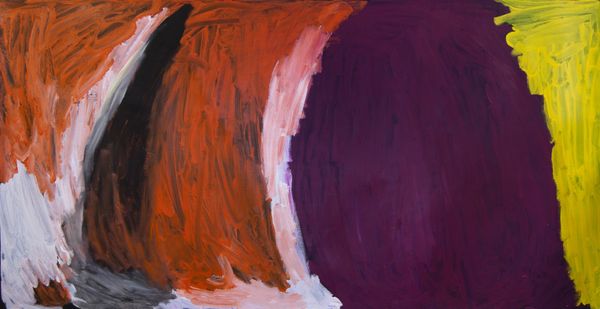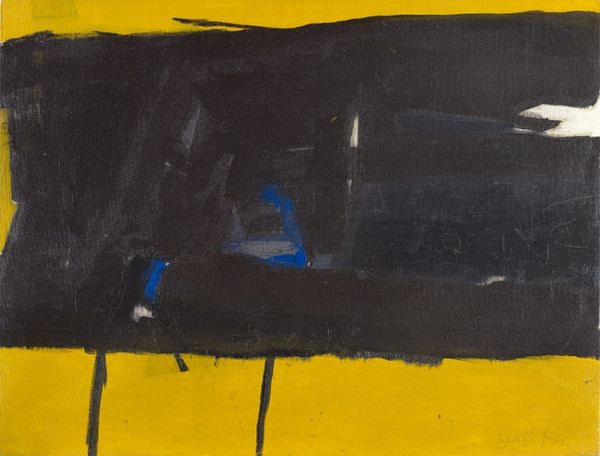
Copyright: Alexander Calder,Fair Use
Curator: Standing before us is an untitled work by Alexander Calder, dating back to 1930. It exemplifies the shift toward pure abstraction during that period, executed with acrylic paint, presumably on canvas. What strikes you most immediately about it? Editor: Well, I'm immediately drawn to the contrast—that stark, almost unsettling juxtaposition of the solid black form against the airy expanse of white and grey. It’s minimalist but impactful. Curator: The simplicity is deliberate. Calder, while later celebrated for his kinetic sculptures, engaged significantly with painting in his early career. Works such as these were directly relevant to the changing definition of space during the early to mid-20th century. Abstraction was adopted across art circles that sought new ways to present human activity amidst vast, industrial landscapes. Editor: I notice how the forms almost hover. There's a palpable tension between the hard edge where the grey meets white and the way the forms balance, it is not static despite being composed of very simple geometric parts. The lack of a defined base creates an instability, doesn't it? Curator: Indeed. That was a conscious effect by Calder. The tilted horizon was intended to subvert traditional painting methods. The horizon represents stability; that’s taken away in the absence of conventional methods in image-making and presentation. What we can learn is that this work reflects anxieties of an audience in a quickly developing world. Editor: The solitary gold circle...it acts as a punctuation point, almost like a distant planet. Do you read this in line with Calder's later interests? Curator: Absolutely, and it introduces the idea of playful experimentation, especially in his compositions of celestial works. One of Calder's major aesthetic contributions can be seen in his capacity to find freedom from academic confines and traditions. His work, in its many forms, has a strong relationship to entertainment value, though never completely dismissive of social reality. Editor: This earlier piece offers a fascinating glimpse into the underpinnings of that freedom. Calder began using lines that broke away from formal academic exercises, using simple, though carefully arranged pieces to establish himself as an artist concerned with motion and form. Curator: Precisely. This painting is a great lesson on the development of art history and its impact on culture at large. It reveals not only an artist's journey but mirrors larger societal adaptations to progressive and challenging social circumstances. Editor: And on a purely visual level, the painting encourages you to appreciate the sheer visual tension of color, line and geometric parts in isolation. It offers an opportunity for quiet contemplation amid those complexities.
Comments
No comments
Be the first to comment and join the conversation on the ultimate creative platform.
